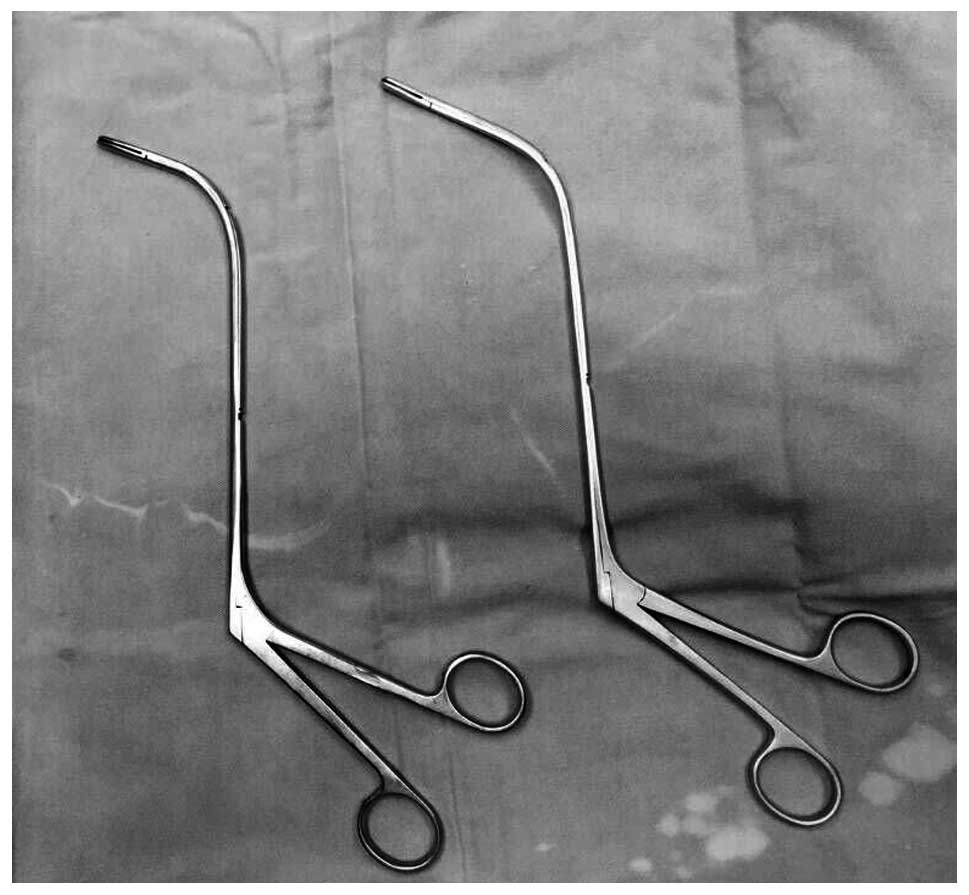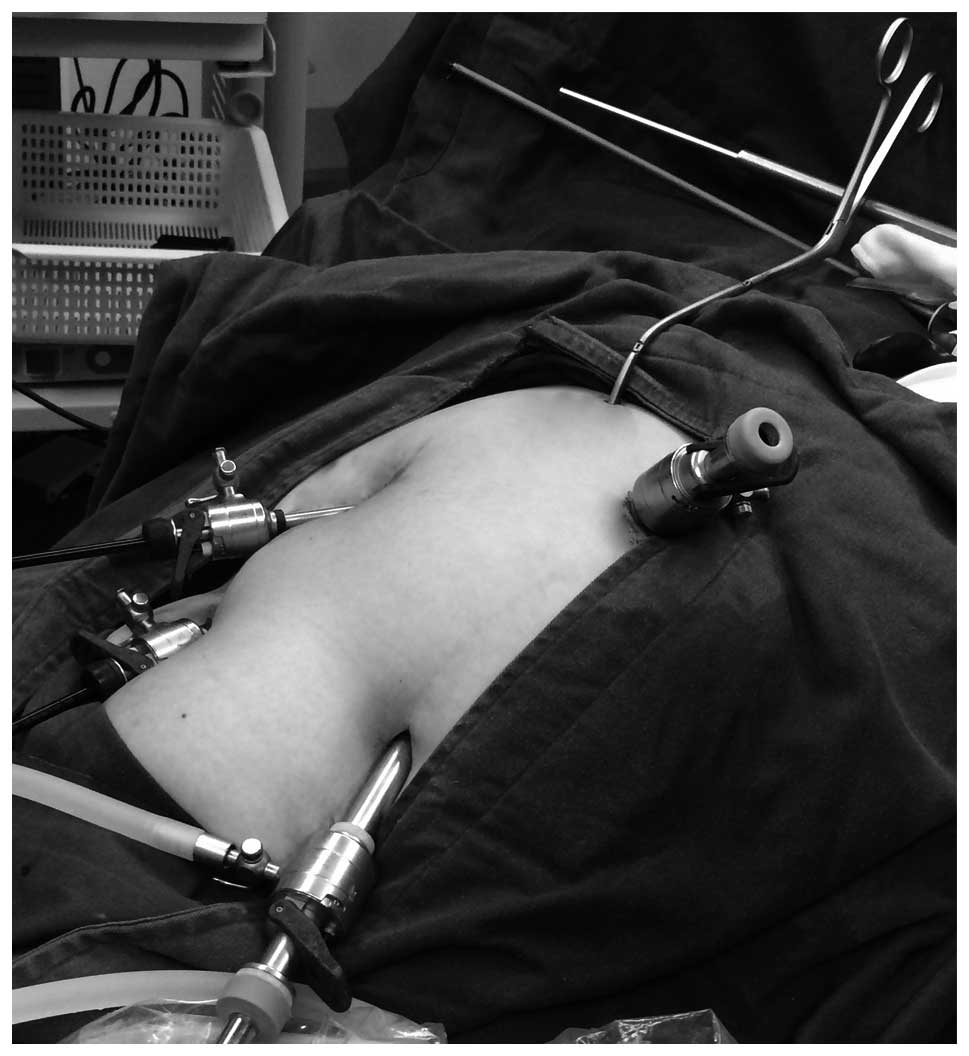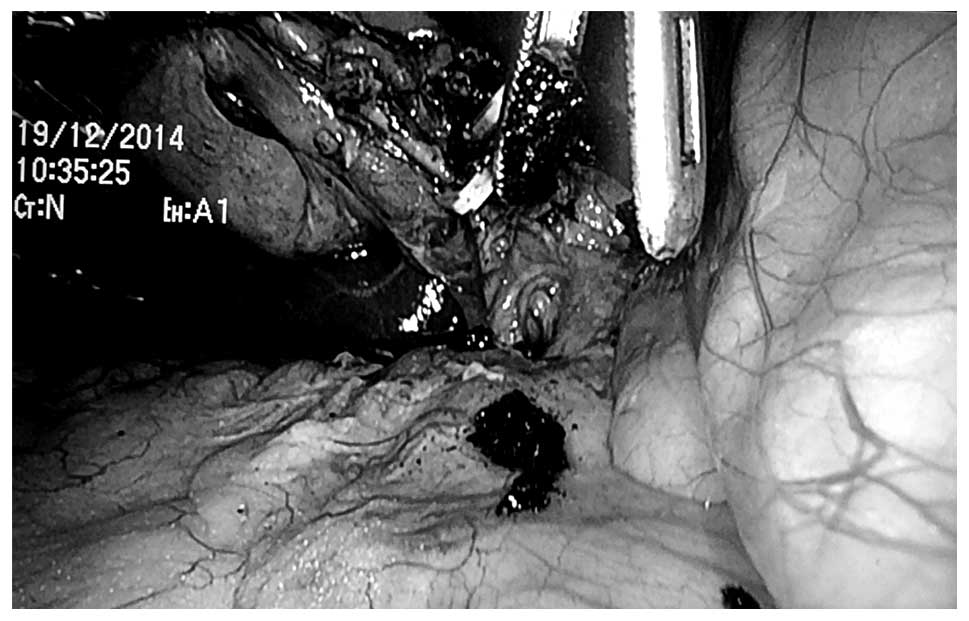|
1
|
Noble H, Tranter S, Chesworth T, Norton S
and Thompson M: A randomized, clinical trial to compare endoscopic
sphincterotomy and subsequent laparoscopic cholecystectomy with
primary laparoscopic bile duct exploration during cholecystectomy
in higher risk patients with choledocholithiasis. J Laparoendosc
Tech A. 19:713–720. 2009. View Article : Google Scholar
|
|
2
|
Kune GA: Surgical anatomy of common bile
duct. Arch Surg. 89:995–1004. 1964. View Article : Google Scholar : PubMed/NCBI
|
|
3
|
Kuroki T, Tajima Y, Tsuneoka N, Kitasato
A, Adachi T, Kosaka T, Okamoto T, Ohno S and Kanematsu T: Placement
of a plasticbiliary biliary stent tube with primary closure of the
common bile duct after laparoscopic common bile duct exploration.
Hepatogastroenterology. 57:1034–1036. 2010.PubMed/NCBI
|
|
4
|
Lux G, Ell C, Hochberger J, Müller D and
Demling L: The first successful endoscopic retrograde laser
lithotripsy of common bile duct stones in man using a pulsed
neodymium-YAG laser. Endoscopy. 18:144–145. 1986. View Article : Google Scholar : PubMed/NCBI
|
|
5
|
Moon JH, Cha SW, Ryu CB, Kim YS, Hong SJ,
Cheon YK, Cho YD, Kim YS, Lee JS, Lee MS, et al: Endoscopic
treatment of retained bile-duct stones by using a balloon catheter
for electrohydraulic lithotripsy without cholangioscopy.
Gastrointest Endosc. 60:562–566. 2004. View Article : Google Scholar : PubMed/NCBI
|
|
6
|
Cipolletta L, Costamagna G, Bianco MA,
Rotondano G, Piscopo R, Mutignani M and Marmo R: Endoscopic
mechanical lithotripsy of difficult common bile duct stones. Br J
Surg. 84:1407–1409. 1997. View Article : Google Scholar : PubMed/NCBI
|
|
7
|
Garg PK, Tandon RK, Ahuja V, Makharia GK
and Batra Y: Predictors of unsuccessful mechanical lithotripsy and
endoscopic clearance of large bile duct stones. Gastrointest
Endosc. 59:601–605. 2004. View Article : Google Scholar : PubMed/NCBI
|
|
8
|
Chang WH, Chu CH, Wang TE, Chen MJ and Lin
CC: Outcome of simple use of mechanical lithotripsy of difficult
common bile duct stones. World J Gastroenterol. 11:593–596. 2005.
View Article : Google Scholar : PubMed/NCBI
|
|
9
|
Shim CS: How Should Biliary Stones be
Managed? Gut Liver. 4:161–172. 2010. View Article : Google Scholar : PubMed/NCBI
|
|
10
|
Hochberger J, Tex S, Maiss J and Hahn EG:
Management of difficult common bile duct stones. Gastrointest
Endosc Clin N Am. 13:623–634. 2003. View Article : Google Scholar : PubMed/NCBI
|
|
11
|
Patel SN, Rosenkranz L, Hooks B, Tarnasky
PR, Raijman I, Fishman DS, Sauer BG and Kahaleh M: Holmium-yttrium
aluminum garnet laser lithotripsy in the treatment of biliary
calculi using single-operator cholangioscopy: A multicenter
experience (with video). Gastrointest Endosc. 79:344–348. 2014.
View Article : Google Scholar : PubMed/NCBI
|
|
12
|
Tandan M, Reddy DN, Santosh D, Reddy V,
Koppuju V, Lakhtakia S, Gupta R, Ramchandani M and Rao GV:
Extracorporeal shock wave lithotripsy of large difficult common
bile duct stones: Efficacy and analysis of factors that favor stone
fragmentation. J Gastroenterol Hepatol. 24:1370–1374. 2014.
View Article : Google Scholar
|
|
13
|
Amplatz S, Piazzi L, Felder M, Comberlato
M, Benvenuti S, Zancanella L, Di Fede F, de'Guelmi A, Bertozzo A,
Farris P, et al: Extracorporeal shock wave lithotripsy for
clearance of refractory bile duct stones. Dig Liver Dis.
39:267–272. 2007. View Article : Google Scholar : PubMed/NCBI
|












